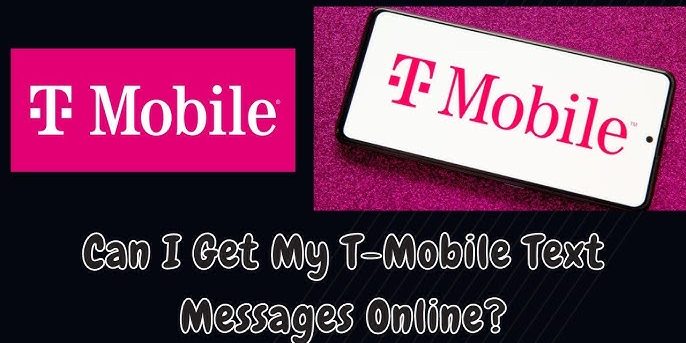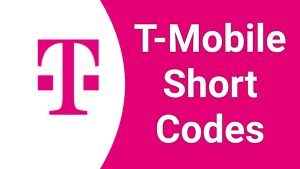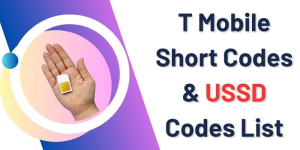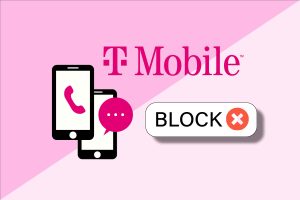In the ever-evolving landscape of mobile communication, short codes have become a crucial tool for businesses and organizations to connect with their audiences. T-Mobile, a prominent wireless carrier, utilizes a range of short codes for various purposes, including the enigmatic 462 text code. This comprehensive guide aims to shed light on the nature and purpose of the 462 text code, the types of messages associated with it, potential concerns, and how T-Mobile customers can effectively manage their interactions with this communication channel.

What is the 462 Text Code?
The 462 text code is a five-digit number employed by T-Mobile to send text messages (SMS) to its customers. It’s part of a broader system of short codes used for specific purposes like marketing, alerts, voting, and customer service interactions. Unlike traditional phone numbers, short codes are designed to be easier to remember and type, making them convenient for both businesses and consumers.
Why Does T-Mobile Use the 462 Text Code?
T-Mobile leverages the 462 text code primarily for sending alerts and notifications related to your account or T-Mobile services. This includes:
- Account Alerts: These messages provide crucial information about your T-Mobile account, such as:
- Billing: Notifications about upcoming bills, payment confirmations, and changes to your payment method.
- Usage: Alerts about data usage, minutes used, and other plan-related information.
- Fraud: Warnings about potential fraudulent activity on your account.
- Upgrade/Downgrade: Confirmations or reminders about changes to your plan or services.
- Service Notifications: T-Mobile may use the 462 text code to inform you about:
- Network Outages: Alerts about service disruptions or maintenance in your area.
- New Features: Announcements about new T-Mobile features or services.
- Emergency Alerts: In some cases, T-Mobile may use this shortcode to send emergency alerts.
- Promotions (Rare): While less common, T-Mobile might occasionally use the 462 text code to send promotional messages about new plans, devices, or special offers.
Examples of 462 Text Messages
The types of messages you receive from the 462 text code can vary widely. Here are some examples:
- Billing Alert: “Your T-Mobile bill is due on [Date]. Pay now at [Link].”
- Data Usage Alert: “You’ve used 80% of your high-speed data. To avoid slowdowns, upgrade your plan at [Link].”
- Fraud Alert: “We detected suspicious activity on your T-Mobile account. Please call us at [Phone Number] to verify.”
- Service Notification: “T-Mobile is performing network maintenance in your area. You may experience temporary service disruptions.”
- Promotion: “Get a free smartphone when you switch to T-Mobile! Learn more at [Link].”
Legitimacy and Security Concerns
Messages from the 462 text code are generally legitimate communications from T-Mobile. However, it’s important to exercise caution, as scammers can sometimes spoof short codes to send phishing or fraudulent messages.
Here’s how you can verify the authenticity of a message:
- Check the Sender ID: Legitimate messages from T-Mobile will typically show “T-Mobile,” “T-Mobile Alerts,” or a similar identifier.
- Review the Message Content: Be wary of messages that are vague, contain grammatical errors, or request sensitive personal information (e.g., passwords, Social Security numbers).
- Contact T-Mobile Directly: If you’re unsure about a message’s legitimacy, contact T-Mobile customer service through official channels to verify.
Managing 462 Text Messages
T-Mobile offers several options for managing messages from the 462 short code:
- My T-Mobile App or Website: Log in to your account and navigate to the “Alerts” or “Notifications” section to customize which types of messages you receive and how you receive them (text, email, push notifications).
- Reply with “STOP” (Promotional Messages): You can typically opt out of promotional messages by replying with the word “STOP.”
- Block the Short Code (Not Recommended): While it’s technically possible to block the 462 short code, this is not advisable. Doing so might prevent you from receiving important account alerts and security notifications.
- Contact Customer Support: If you have concerns about specific messages or want to adjust your notification preferences, contact T-Mobile customer support for assistance.
Best Practices for Handling 462 Text Messages
To ensure a safe and positive experience with 462 text messages, follow these best practices:
- Be Cautious with Links: Avoid clicking on links in messages from 462 unless you’re confident about their authenticity.
- Don’t Share Personal Information: Never share sensitive information like passwords or financial details via text message.
- Report Suspicious Messages: If you receive any suspicious or spam messages, report them to T-Mobile and the appropriate authorities.
Conclusion
The 462 text code plays a vital role in T-Mobile’s communication strategy, providing customers with essential account information, security alerts, and occasional promotional offers. By understanding its purpose, exercising caution, and utilizing the available tools to manage your preferences, you can ensure a secure and informative experience with 462 text messages.
Remember, being vigilant and proactive about your mobile communication can help you stay informed, protect your account, and make the most of the services offered by T-Mobile.
شاهد المزيد فى T-mobile



